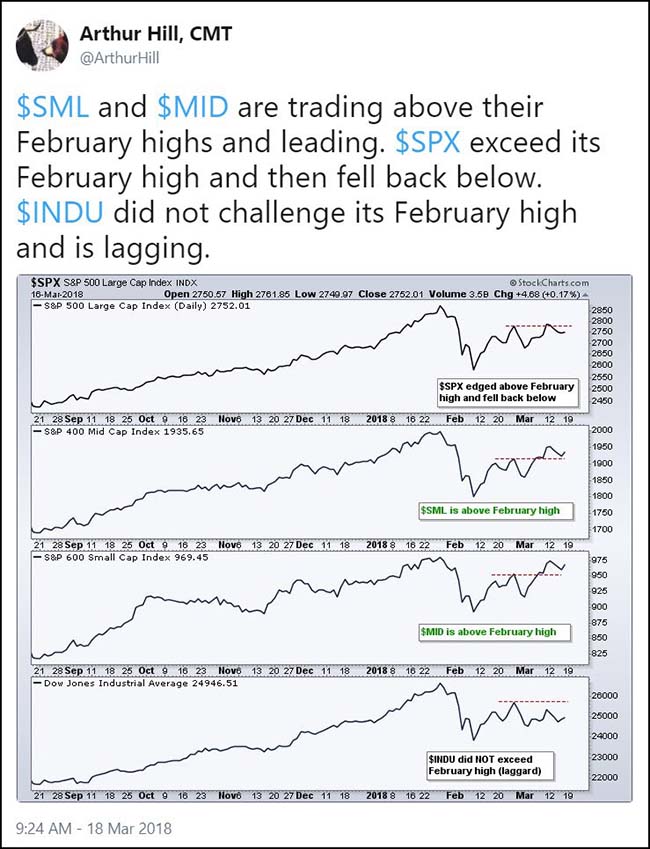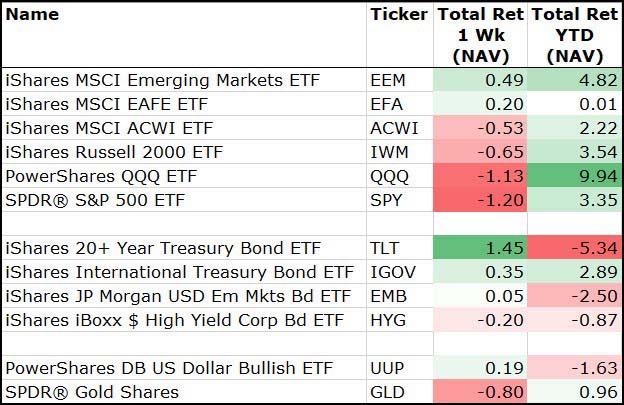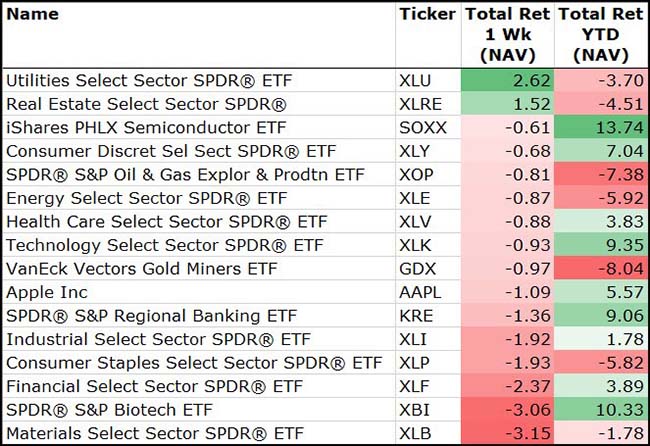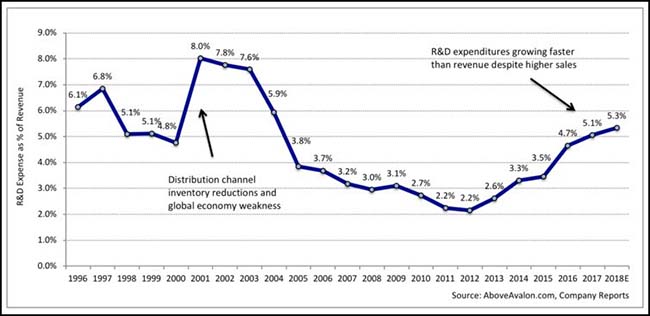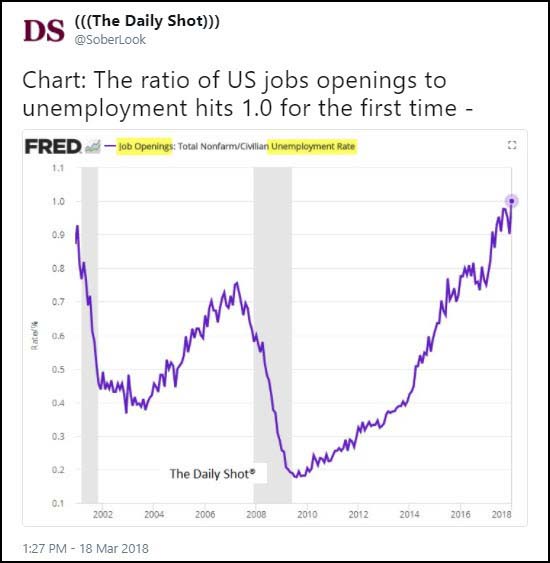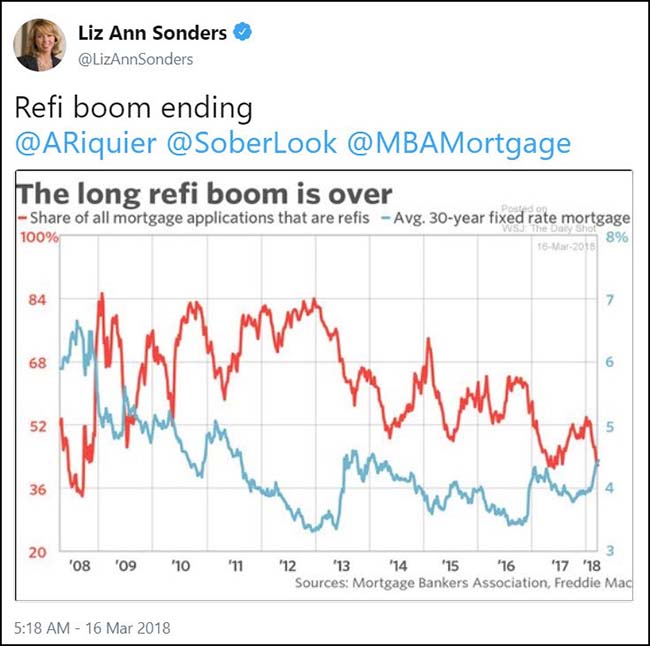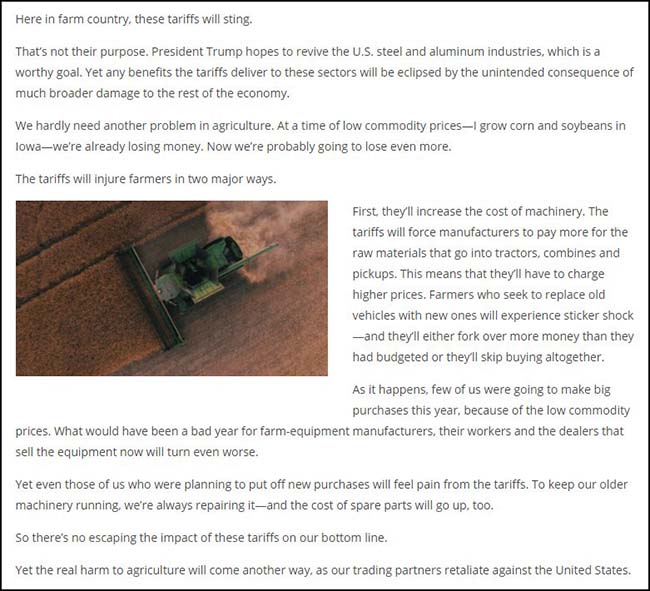by Blaine Rollins, CFA, 361 Capital
Your kids are out on break, so it is time for you to follow in their footsteps and take some time off from the tape and the news wires. The market is continuing to churn within the range from its January highs and February lows. While corporate news will be light this week, we should get a Federal Reserve rate hike from 1.5% to 1.75% with commentary from the new Fed Chairman Powell. And on Friday, the new steel and aluminum tariffs will begin which will cause counter tariffs from affected nations. Mega cap stocks continue to be negatively impacted from the incoming trade battles, making small caps the better performing stocks right now. And what can we say about Washington D.C.? It as if there is a real life ‘Survivor’ show being filmed in the White House. And just when you think it can’t get any crazier, it does. If you are off with the kids this week, have a great time in powder at Lake Tahoe or in the sands of the Big Island.
To receive this weekly briefing directly to your inbox, subscribe now.
Time for the small and mid caps to win while the trade battles enter unknown territory…
For the week, the Nasdaq pulled back from its all-time highs…
Meanwhile, Treasuries gained ground as U.S. economic data began surprising on the downside.
(3/16/18)
Among the sectors, it was mostly a red week with only Utilities and REITs ending green as they followed bond prices higher…
(3/16/18)
Apple’s stock is +5.6% for the year. Now all it needs is some winning products out of its rising R&D machine…
As seen in Exhibit 3, Apple R&D expenditures as a percent of revenue now stand at a 14-year high. This tells us that Apple is spending more on R&D for every dollar of sales earned despite the dramatic rise in sales over the years. For some companies this may not mean much, but for Apple it can’t be ignored.
A great chart if you are looking for a job. A terrible one if you are trying to hire…
Blame the construction worker shortage for the lack of new homes available (and thus soaring used home prices)…
A worsening labor shortage is adding to the problem. The construction workforce in the U.S. declined to 10.5 million in 2016, from 10.6 million in 2010, when the real-estate market was near bottom, according to an analysis of U.S. Census data by Issi Romem, an economist at BuildZoom, a startup that tracks construction data for building contractors.
Todd Peuler was hired 3½ years ago as a recruiter for Michigan building supplier Fox Brothers Co., a subsidiary of Beacon Roofing Supply Inc. Mr. Peuler says it takes about twice as long to build a house as it did in the past because of lag time waiting to find workers to complete tasks.
Sometimes, he says, clients are expecting to move in, but a house is still wrapped in plastic because workers are needed to put on siding.
“The workforce is in their 50s and 60s. They’re retiring and there’s no new bloodline coming in,” he says. “We didn’t get in this situation overnight, and it could take years to get out.”
(WSJ)
Rising rates are slowing the mortgage refinance business…
Many more economic surprises to the downside than upside in the last two weeks. This is quite a correction in the Atlanta Fed forecast for Q1 GDP…
As steel tariffs begin on Friday, some thoughts from an Iowa bean and corn farmer…
And now some layoffs due to the incoming metal tariffs…
American Keg Company is the only remaining U.S. manufacturer of stainless steel beer kegs. Despite competition from German and Chinese firms, American Keg has only used domestic steel. But now it’s being punished for this domestic sourcing as Donald Trump’s steel tariffs have forced the business to lay off a third of its workforce.
Since it began manufacturing kegs in 2015, the Pottstown, Pennsylvania-based American Keg has operated on a narrow margin. The 15.5-gallon keg is a staple in bars and fraternities, and the American-made version currently retails for $115 while a German or Chinese keg costs about $95. American Keg has survived by selling to craft breweries that want to support U.S. workers and American steel, even at a small premium. “But there’s a limit to what people would pay to have an American product,” says CEO Paul Czachor.
Mr. Trump has imposed the tariffs in the name of national security. But in practice they punish American steel users by giving the American metal industry the opportunity to raise prices while still undercutting foreign steel and aluminum.
(WSJ)
The department store parking lots in Colorado have become vast wastelands of empty concrete…
@M_McDonough: Department Stores vs Non-Store Retailers (Percent of Total Retail Sales)
Facebook should just move the corporate campus to Washington D.C. because that is where the company will be spending all of its time going forward…
It is shocking how played Facebook got by Dr. Kogan and Cambridge Analytics. It is now very clear to all that team Facebook was not the smartest group in the room. And now they will pay for it.
All he divulged to Facebook, and to users in fine print, was that he was collecting information for academic purposes, the social network said. It did not verify his claim. Dr. Kogan declined to provide details of what happened, citing nondisclosure agreements with Facebook and Cambridge Analytica, though he maintained that his program was “a very standard vanilla Facebook app.”
He ultimately provided over 50 million raw profiles to the firm, Mr. Wylie said, a number confirmed by a company email and a former colleague. Of those, roughly 30 million — a number previously reported by The Intercept — contained enough information, including places of residence, that the company could match users to other records and build psychographic profiles. Only about 270,000 users — those who participated in the survey — had consented to having their data harvested.
(NY Times)
This interview with Christopher Wylie just might convince you to delete Facebook, as well as erase all of your digital footprints…
Wylie oversaw what may have been the first critical breach. Aged 24, while studying for a PhD in fashion trend forecasting, he came up with a plan to harvest the Facebook profiles of millions of people in the US, and to use their private and personal information to create sophisticated psychological and political profiles. And then target them with political ads designed to work on their particular psychological makeup.
“We ‘broke’ Facebook,” he says.
(NY Times)
Speaking of Presidential elections, it was time for another nail biter in Russia. And this is one crazy read…
It’s early March, two weeks before Russia’s polling day, but the presidential election season is already in full swing in Chubulga, a reindeer-herding settlement in north-eastern Yakutia. It’s an hour’s flight to the nearest village, which is itself a further two hours from the nearest asphalt road and 5,000km east of Moscow. With a population of just three, this district is unlikely to turn the electoral tide. But with election officials desperate to raise turnout and show support for current president Vladimir Putin, no expense has been spared. A Russian-made MI-8 helicopter with a polar bear painted on the fuselage, borrowed from a local airline for the occasion, lands on a snow-sodded clearing. It has flown for an hour over mountains and the taiga, forest plains that stretch endlessly in all directions. A team disembarks and trudges through the snow to a wooden hut at the edge of the forest, surrounded by three snowmobiles, a handful of dogs and a dozen reindeer. The nearest inhabited settlement is at least a day away by snowmobile.
Finally, an incredible image of 150 years of hurricanes on our marble…
Very wild how the storms cannot cross the equator.
Like streamers of splattered paint, the tracks of nearly 150 years of tropical cyclones weave across the globe in this map. The map is based on all storm tracks available from the National Hurricane Center and the Joint Typhoon Warning Center through September 2006. The accumulation of tracks reveals several details of hurricane climatology, such as where the most severe storms form and the large-scale atmospheric patterns that influence the track of hurricanes.
Copyright © 361 Capital






